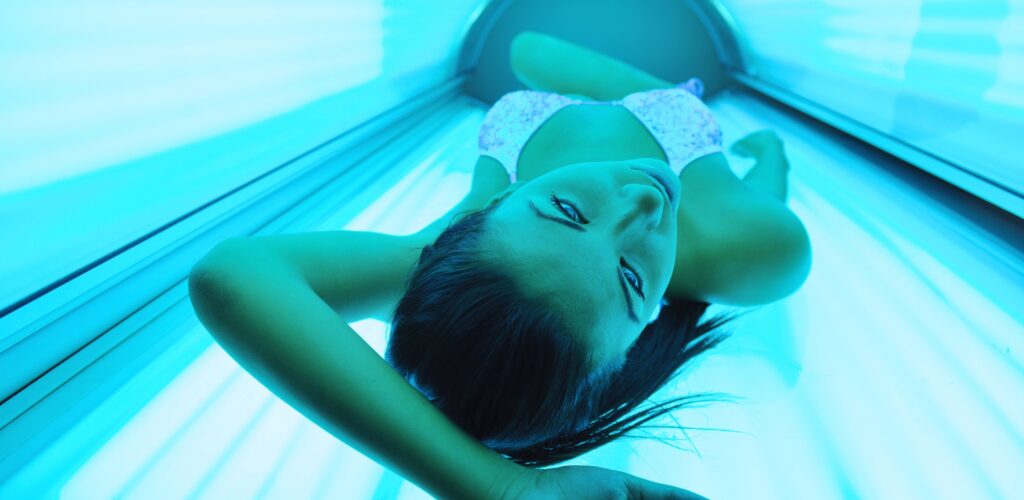Tanning beds have long been glamorized as a shortcut to achieving a sun-kissed glow, but beneath their allure lies a host of dangers that can wreak havoc on your skin and overall health. In this post, we’ll debunk common myths associated with tanning beds, explore the differences between tanning beds and natural sunlight, delve into the harmful effects of tanning, and highlight safe alternatives for achieving a bronzed complexion.
Myth vs. Reality: Debunking Tanning Bed Myths
- Myth: Tanning beds are a safe way to get Vitamin D.
Reality: While tanning beds emit UVB radiation, which triggers Vitamin D production, the risks of skin cancer and premature aging far outweigh any potential benefits. - Myth: Tanning beds provide a base tan that protects against sunburn.
Reality: A base tan offers minimal protection against sunburn and does not negate the harmful effects of UV radiation on the skin. - Myth: Tanning beds are safer than natural sunlight.
- Reality: Tanning beds emit concentrated doses of UV radiation, increasing the risk of skin cancer and other skin damage compared to natural sunlight.
Tanning Beds vs. Natural Sunlight: Understanding the Difference
Similar to natural sunlight, tanning beds emit both UVA and UVB radiation. However, tanning beds can emit up to three times the amount of UVA radiation as natural sunlight. “This leads to deeper penetration of UV rays into the skin and increased risk of skin cancer and premature aging,” says Dr. Adam Mamelak, board certified dermatologist in Austin, Texas.
Harmful Effects of Tanning: Risks Associated with Tanning Beds
- Skin Cancer: Exposure to UV radiation from tanning beds is a significant risk factor for developing skin cancer, including melanoma, the deadliest form of skin cancer.
- Premature Aging: Tanning beds can accelerate the aging process, leading to wrinkles, fine lines, age spots, and sagging skin.
- Eye Damage: UV radiation from tanning beds can cause eye damage, including cataracts and corneal burns.
- Immune Suppression: Tanning beds can suppress the immune system, making individuals more susceptible to infections and other health issues.
Safe Alternatives: Embracing Sunless Tanning
- Spray Tans: Spray tans offer a safe and convenient alternative to tanning beds, providing a temporary tan without exposure to UV radiation.
- Self-Tanning Lotions: Self-tanning lotions contain DHA, a non-toxic ingredient that interacts with the outer layer of the skin to produce a tan-like appearance.
- Recommended Ways to Get Vitamin D: Instead of tanning beds, opt for safer sources of Vitamin D, such as fortified foods, supplements, and brief exposure to natural sunlight with adequate sun protection.
Conclusion: Prioritizing Skin Health and Safety
Tanning beds may promise a sun-kissed glow, but the risks far outweigh the temporary benefits. By debunking common myths associated with tanning beds, understanding the differences between tanning beds and natural sunlight, and embracing safe alternatives such as spray tans and self-tanning lotions, you can protect your skin from harm while still achieving a radiant complexion. Remember, your skin health is priceless—embrace safe sun practices and prioritize long-term wellness over short-term beauty trends.

